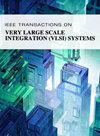A 10-bit 50-MS/s Radiation Tolerant Split Coarse/Fine SAR ADC in 65-nm CMOS
IF 3.1
2区 工程技术
Q2 COMPUTER SCIENCE, HARDWARE & ARCHITECTURE
IEEE Transactions on Very Large Scale Integration (VLSI) Systems
Pub Date : 2025-06-17
DOI:10.1109/TVLSI.2025.3576998
引用次数: 0
Abstract
This article presents a 10-bit radiation-hardened-by-design (RHBD) SAR analog-to-digital converter (ADC) operating at 50 MS/s, designed for aerospace applications in high-radiation environments. The system- and circuit-level redundancy techniques are implemented to mitigate radiation-induced errors and metastability. A novel split coarse/fine asynchronous SAR ADC architecture is proposed to provide system-level redundancy. At circuits level, single-event effects (SEEs) error detection and radiation-hardened techniques are implemented. Our co-designed SEE error detection scheme includes last-bit-cycle (LBC) detection following the LSB cycle and metastability detection (MD) via a ramp generator with a threshold trigger. This approach detects and corrects radiation-induced errors using a coarse/fine redundant algorithm. The radiation-hardened latch comparators and D flip-flops (DFFs) are incorporated to further mitigate SEEs. The prototype design is fabricated using TSMC 65-nm technology, with an ADC core area of 0.0875 mm2 and a power consumption of 2.79 mW at a 1.2-V power supply. Postirradiation tests confirm functionality up to 100-krad(Si) total ionizing dose (TID) and demonstrate over 90% suppression of large SEE under laser testing.一个采用65纳米CMOS的10位50毫秒/秒耐辐射分裂粗/细SAR ADC
本文介绍了一种工作速度为50 MS/s的10位辐射强化设计(RHBD) SAR模数转换器(ADC),专为高辐射环境下的航空航天应用而设计。系统级和电路级冗余技术的实施,以减轻辐射引起的误差和亚稳态。提出了一种新颖的分割式粗/细异步SAR ADC架构,提供系统级冗余。在电路级,实现了单事件效应(SEEs)错误检测和辐射硬化技术。我们共同设计的SEE错误检测方案包括LSB周期后的最后位周期(LBC)检测和通过带有阈值触发器的斜坡发生器进行亚稳态检测(MD)。该方法采用粗/细冗余算法检测和校正辐射引起的误差。结合了抗辐射锁存比较器和D触发器(dff)来进一步减轻see。该原型设计采用台积电65纳米技术制造,ADC核心面积为0.0875 mm2,功耗为2.79 mW,电源为1.2 v。辐射后测试证实了高达100克拉(Si)总电离剂量(TID)的功能,并且在激光测试下显示了超过90%的大SEE抑制。
本文章由计算机程序翻译,如有差异,请以英文原文为准。
求助全文
约1分钟内获得全文
求助全文
来源期刊
CiteScore
6.40
自引率
7.10%
发文量
187
审稿时长
3.6 months
期刊介绍:
The IEEE Transactions on VLSI Systems is published as a monthly journal under the co-sponsorship of the IEEE Circuits and Systems Society, the IEEE Computer Society, and the IEEE Solid-State Circuits Society.
Design and realization of microelectronic systems using VLSI/ULSI technologies require close collaboration among scientists and engineers in the fields of systems architecture, logic and circuit design, chips and wafer fabrication, packaging, testing and systems applications. Generation of specifications, design and verification must be performed at all abstraction levels, including the system, register-transfer, logic, circuit, transistor and process levels.
To address this critical area through a common forum, the IEEE Transactions on VLSI Systems have been founded. The editorial board, consisting of international experts, invites original papers which emphasize and merit the novel systems integration aspects of microelectronic systems including interactions among systems design and partitioning, logic and memory design, digital and analog circuit design, layout synthesis, CAD tools, chips and wafer fabrication, testing and packaging, and systems level qualification. Thus, the coverage of these Transactions will focus on VLSI/ULSI microelectronic systems integration.

 求助内容:
求助内容: 应助结果提醒方式:
应助结果提醒方式:


